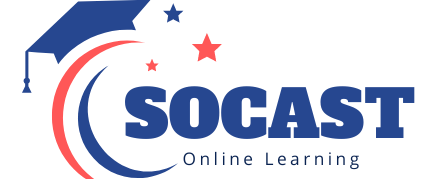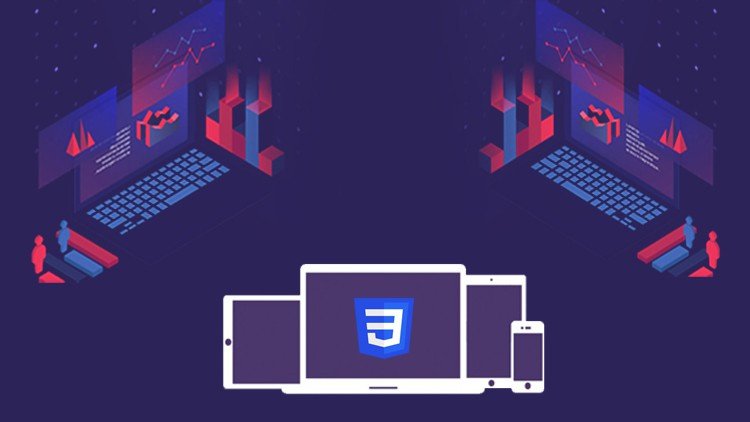Currently Empty: $0.00
- Description
- Curriculum
- FAQ
- Reviews
We live in an amazing world of data!
Organisations that know how to use it dramatically outperform the competition. But it’s not easy to make use of your data. You need to have the technical skills to collect it and analyse it, but you also need to have the organisational skills to know when to do it and how to interpret the results to drive better decisions. This is exactly what business data analytics is about and it is what we are going to study.
—————-
This course is officially endorsed by the International Institute of Business Analysis™ (IIBA®) and qualifies for 14 professional development units for the purposes of certification.
—————-
This course will explain how to prepare for a data analytics project, how to organise the analytics process, and what to consider to make sure the results of your analysis will drive noticeable business change.
We will cover the following topics:
-
What is business data analytics and how it differs from other data related disciplines, like data science or business analysis
-
How to define research questions for your analytics initiative
-
How to organise data collection process
-
What to take into account when performing analysis
-
How to interpret the results of analysis and communicate them to decision makers
-
How to ensure real actions happen as the result of your analysis
-
What to consider when scaling analytics capability
We will also review a set of selected methods and techniques that are usually applicable to the tasks above.
—————-
Business data analytics is mostly a management discipline and it discusses how to organise the analytics capability within the business to get valuable results.
It will be extremely valuable for line managers of analytics teams, project managers who happen to have analytics components to the projects they manage, and business analysts who happen to get involved into analytics initiatives.
You will also get an official IIBA Endorsed Education Provider certificate of completion in addition to the standard Udemy certificate.
—————-
A certification in business data analytics (IIBA®-CBDA) is a unique certificate offered by the International Institute of Business Analysis for business data analytics professionals. It tests your knowledge of the Guide to Business Data Analytics published by IIBA and recognises your ability to effectively execute analysis related work in support of business analytics initiatives.
The exam consists of 75 multiple-choice, scenario-based questions to be completed within 2 hours. It is a challenging and rewarding exam.
This course is 100% aligned with the Guide to Business Data Analytics and is your chance to get prepared for the exam.
At the end of the course, you will get a sample exam to test your knowledge and get better prepared.
Good luck!
=========================
Note: I am an Endorsed Education Provider™ by IIBA®, which means the materials and references to IIBA® and its publications used in this course are licensed for me to do so. By enrolling in this course you support legal use of intellectual property and contribute to the development of business analysis profession.
All the trademarks belong to their rightful owners.
Identify research questions
-
1Starting the course
-
2Introduction to business data analytics
Let's learn what is involved in business data analytics and why business data analytics is important.
-
3What is business data analytics
We will define business data analytics from a multitude of viewpoints.
-
4The business data analytics cycle
We will learn the scientific method and how it is applied to the business world.
-
5The business data analytics objectives
We will look at 4 types of analytics methods.
-
6Business analysis vs business data analytics
-
7Technique: Understanding probability
We will start with the most foundational concept in analytics - probability, what it is and how to interpret it.
-
8Technique: Probability tree
We will use the knowledge from the previous lesson and start building probability trees.
-
9Case study: Context of analysis
An interesting case study of how the context of analysis may influence an individual's interpretation of data.
-
10Quiz: Introduction to business data analytics
A set of simple true/false questions to test your knowledge.
-
11Course materials
Source data
-
12Scope of identifying research questions
The tasks that constitute Identifying research questions knowledge domain.
-
13Define business problem or opportunity
Let's look and how identifying a business problem initiates the quest for research questions.
-
14Technique: Business model canvas
We'll explore business model canvas and how it may help with understanding the context of analysis,.
-
15Identify and understand the stakeholders
We'll learn how to identify stakeholders of an analytics initiative.
-
16Technique: Stakeholder analysis
We'll look at formal ways to analyse stakeholder landscape.
-
17Current state analysis
We'll see what is involved in current state analysis.
-
18Technique: Process modelling
An overview of process modelling and analysis to help define scope for analytics and land on a research question.
-
19Technique: Root cause analysis
Root cause analysis - a formal technique to better understand the underlying causes for business problems.
-
20Technique: Exploratory Data Analysis (EDA) - Part 1 - descriptive statistics
Exploratory data analysis is one of the main tools in your toolbox as an analytics specialist. In the first part, we will explore the method behind it and will learn how to calculate the basic descriptive parameters.
-
21Technique: Exploratory Data Analysis (EDA) - Part 2 - correlation and regression
In part two we will explore more advanced descriptive parameters, such as measurement of correlation and linear regression.
-
22Technique: Exploratory Data Analysis (EDA) - Part 3 - business visualizations
In part three we will focus on numerous business visualization models.
-
23Technique: Exploratory Data Analysis (EDA) - Part 4 - Case study
In part four we will apply all the methods together to explore a sample data set and come up with initial research hypothesis.
-
24Case study: Anscombe's quartet
A case study that proves importance of visualization.
-
25Define future state
We'll explore the steps to define the future state.
-
26Define research questions
Some considerations when defining research questions.
-
27Technique: Hypothesis testing
We will explore one of the most powerful techniques in analytics - hypothesis testing. In particular, we will answer the questions: What makes a good hypothesis? How to interpret the testing results?
-
28Plan business data analytics approach
We will learn what to consider when planning an analytics approach for a selected research question.
-
29Quiz: Identify research questions
A set of simple true/false questions to test your knowledge.
-
30Course materials
Analyze data
-
31Scope of sourcing data
The tasks that constitute Sourcing data knowledge domain.
-
32Plan data collection
The steps involved in planning for data collection.
-
33Case study: Plan data collection
A quick case study on how combining technical knowledge and knowledge of the business allows to plan collection of data.
-
34Determine the data sets
The steps involved in determining which data sets would suffice for analysis.
-
35Technique: Data modelling and normalisation
The techniques to model data in a way that makes it easier to manage.
-
36Technique: Data mapping
The technique to map data from multiple data sources.
-
37Technique: Data dictionary
The technique to create and maintain a single source of truth for knowledge about data in the organization.
-
38Collect data
The steps involved to collect data for analysis.
-
39Technique: Extract - Transform - Load (ETL)
We'll look at a structured process to move data from the source to a target location.
-
40Article: Business analyst's role on data migration projects
-
41Technique: Data flows
A technique to model how data flows within the business.
-
42Validate data
We'll explore the definition of what makes data good enough for analysis and how to validate it.
-
43Quiz: Source data
A set of simple true/false questions to test your knowledge.
-
44Course materials
Interpret and report results
-
45Scope of analyzing data
The tasks that constitute Analyzing data knowledge domain.
-
46Develop data analysis plan
The importance of planning!
-
47Technique: Regression analysis
We'll look at linear regression again and discuss some considerations when using it.
-
48Technique: Seasonality (time series) analysis
We'll discuss methods to analyse seasonality effects.
-
49Technique: Classification algorithms
Classification is one of the most common tasks in data analytics. We will review some popular methods to classify the data and use it for predictions.
-
50Prepare data
The steps involved in preparing the data for analysis.
-
51Explore data
EDA can be used not only for initial investigation but also as the first step of in-depth analysis.
-
52Perform data analysis
The method for performing your analysis.
-
53Assess the approach taken
After analysis is over, the results need to be reviewed to decide: have we achieved what we expected to achieve?
-
54Technique: Business simulation
Business simulation is a way to generate data when you have none - based on business rules and you knowledge of the business.
-
55Technique: Optimisation
Optimisation is the technique to maximize or minimize a certain value (e.g. profit or cost) being constrained by business limitations.
-
56Case study: Simulation and optimisation
In this case study we will see how a particular dynamic systems modelling tool can be used to perform the tasks of simulation and optimisation.
-
57Article: Systems thinking and imitation modelling
-
58Quiz: Analyze data
A set of simple true/false questions to test your knowledge.
-
59Course materials
Influence business decision-making
-
60The scope of interpreting and reporting results
Which tasks constitute interpreting and reporting of results.
-
61Validate understanding of stakeholders
We'll explore how to validate your understanding of who the stakeholders are.
-
62Plan communications
Steps to plan communication with the stakeholders.
-
63Determine communication needs
How to determine communication needs of different stakeholder groups.
-
64Derive insights and communicate findings
We will look at the method to derive insights and communicate findings.
-
65Technique: Data storytelling
Data storytelling is a powerful technique to make your reports better.
-
66Case study: Data storytelling
In this case study we will have a look at amazing example of data storytelling to get inspired.
-
67Quiz: Interpret and report results
A set of simple true/false questions to test your knowledge.
-
68Course materials
Guide organizational-level strategy for business data analytics
-
69The scope for influencing business decisions making
Which tasks constitute influencing business decision-making.
-
70Recommend actions
Let's see how you can put your BA hat on and recommend actions based on insights from data.
-
71Plan implementation
What is an implementation plan and why do you need to bother?
-
72Manage change
Which role organisation change management plays in the process?
-
73Case study: Implementation and change management planning
Let's have a quick look at how you could map stakeholders, identify their needs, plan implementation and org change.
-
74Quiz: Influence business decision-making
A set of simple true/false questions to test your knowledge.
-
75Course materials
Sample CBDA exam
-
76Scope of guiding organizational strategy
Which tasks constitute guiding strategy for analytics.
-
77Organizational strategy
Let's review organizational elements of the strategy, such as future state org charts and team composition.
-
78Talent strategy
Let's review how talent strategy contributes to building the practice.
-
79Data strategy
-
80Quiz: Guide organizational-level strategy for business data analytics
A set of simple true/false questions to test your knowledge.
-
81Course materials
How long do I have access to the course materials?
You can view and review the lecture materials indefinitely, like an on-demand channel.
Can I take my courses with me wherever I go?
Definitely! If you have an internet connection, courses on Udemy are available on any device at any time. If you don't have an internet connection, some instructors also let their students download course lectures. That's up to the instructor though, so make sure you get on their good side!
Stars 5
253
Stars 4
154
Stars 3
33
Stars 2
14
Stars 1
7




